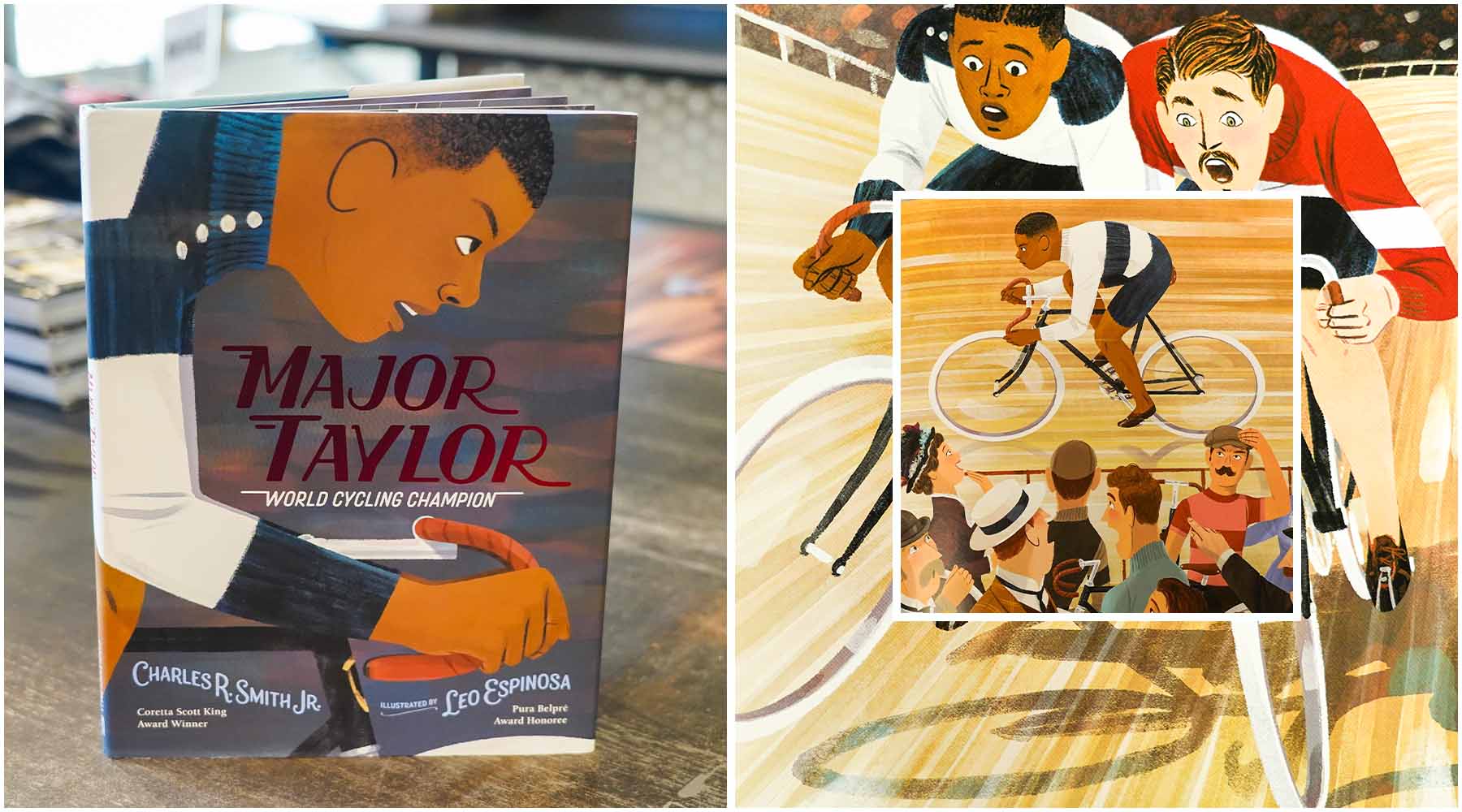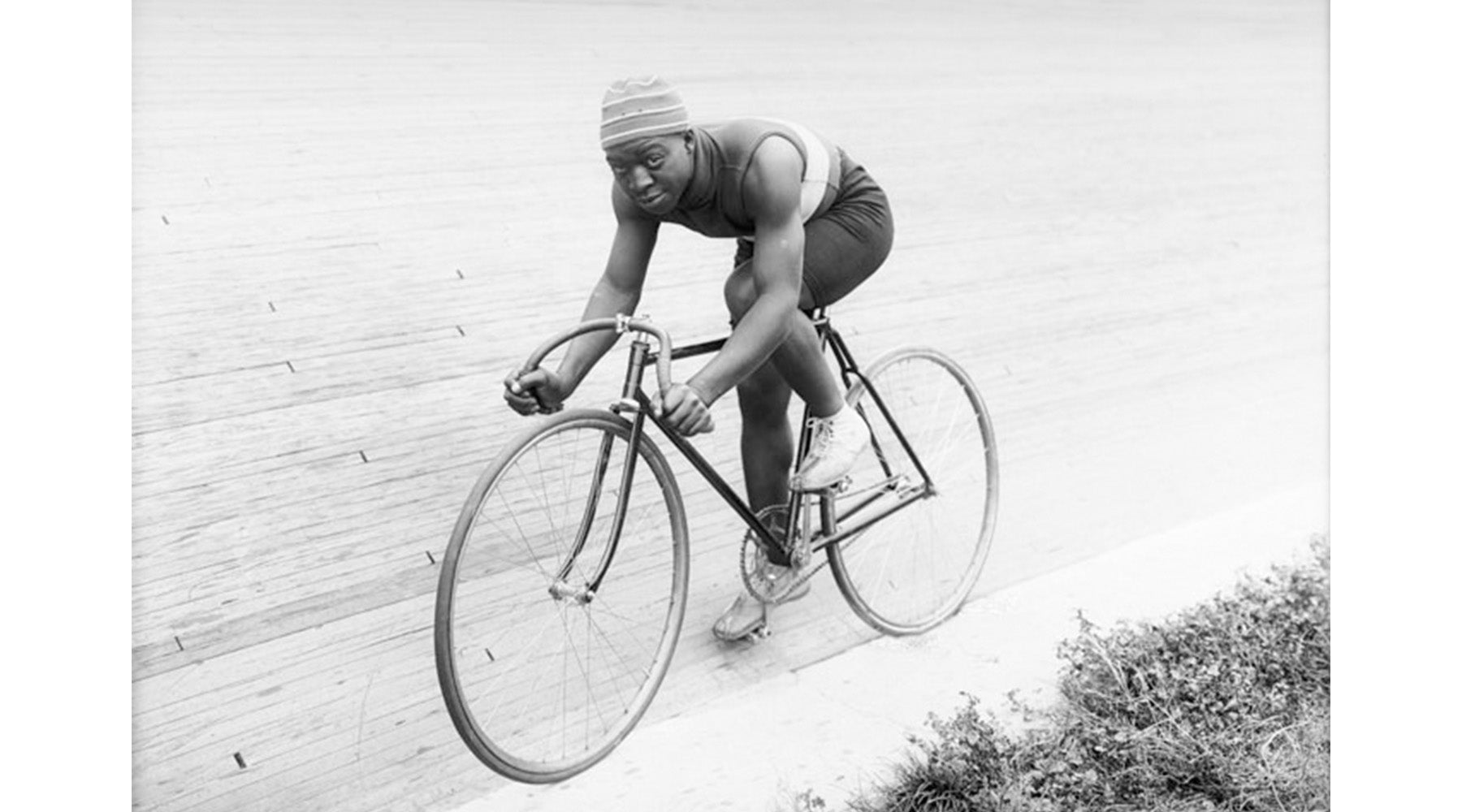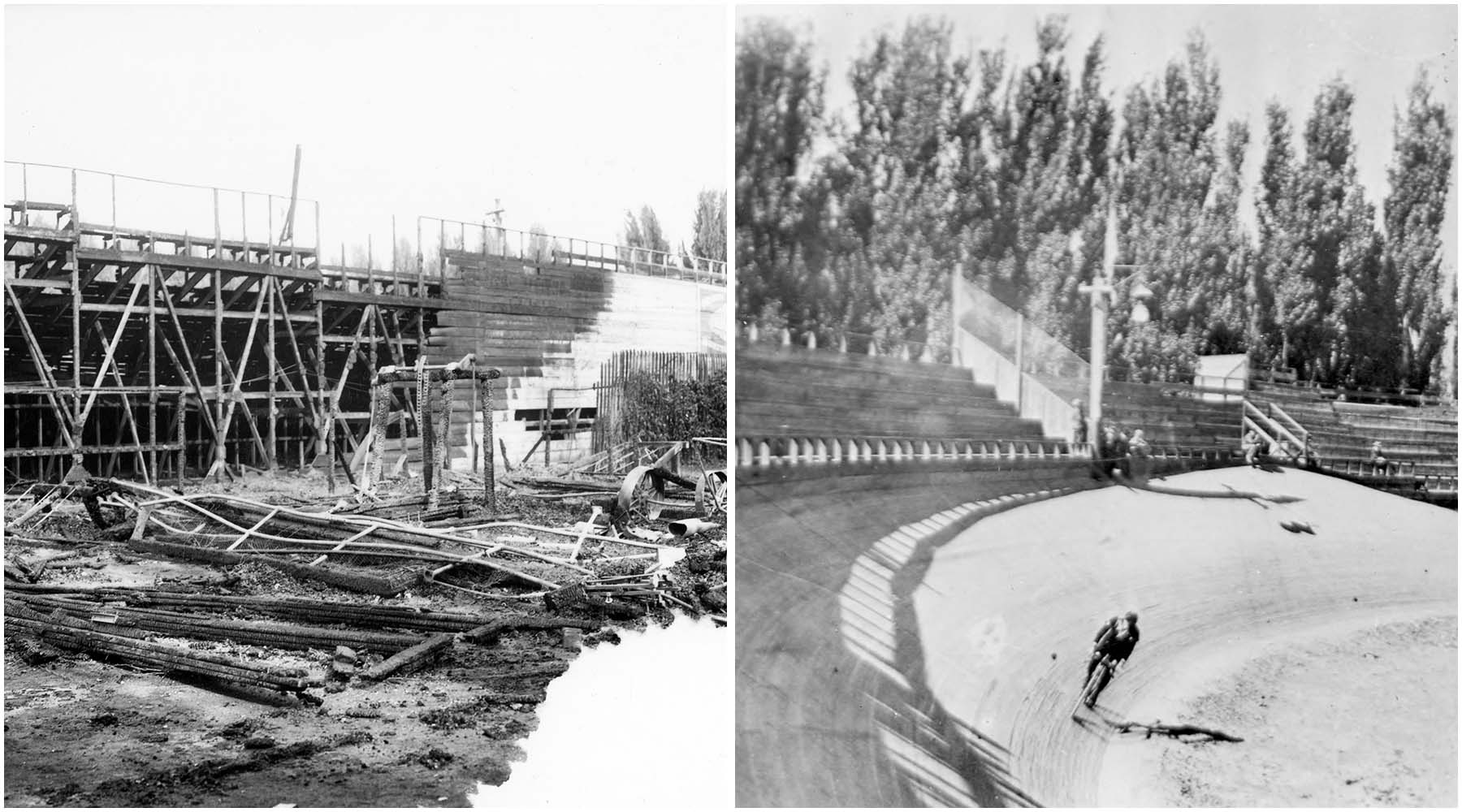
Did You Know Major Taylor Raced in Utah?
If you’ve ever spent much time in the office at the bike shop, you’ve certainly heard Ryan bust out some random fun facts whether they be about cycling, Utah, 80’s New Wave bands or just about anything else. One topic that occasionally pops up is the history of track racing in Utah. Whenever he brings it up, surprisingly few know of Utah’s history. Over the years I have heard him say on numerous occasions “Did you know that Utah had the most prominent track west of the Mississippi at the turn of the 20th century?” “Did you know that Major Taylor raced in Utah?” “Did you know that Major Taylor earned more money than Babe Ruth?” The statement about Babe Ruth is not technically true. However in 1903 Major Taylor earned over $35,000 in prize money on a world tour while Babe Ruth only saw his first $20,000 salary in 1920.
Then there are the photos. You will hear Ryan say “check this out” and waive you over to his computer screen where he pulls up photos from the Shipler Collection at the University of Utah. Photos appear of the cycling track at the Salt Palace, the track out at Saltair and an image of Major Taylor on the Salt Palace track in 1910.

This past fall our good friend, Leo Espinosa illustrated the wonderful children’s book Major Taylor: World Cycling Champion authored by the poet Charles R. Smith Jr. Quickly it became a favorite in our household. After each of our girls finishes their reading every night, Ryan or I let them pick out a book for us to read to them. At least weekly Major Taylor: World Cycling Champion is the book of choice in the evening.
After reading it over and over again and thinking about Utah’s history, we wanted to share with you the book along with Major Taylor’s impact on the sport while also touching on Utah’s history of track racing at the peak of its interest in the United States. Surprisingly, Utah played a key role in the development of the sport while Major Taylor broke boundaries worldwide throughout his career.
The Start of Track Racing in Salt Lake City
Around the turn of the 20th Century, Salt Lake City consisted of just under 55,000 residents. So it is surprising that by 1900, the city had become the center of professional track racing west of the Mississippi and remained so through 1912. At high elevation and given the desert climate, the Salt Palace track was known as one of the fastest, if not the fastest tracks in the world.
During the 1890s, sports and commercialized leisure experienced a surge in popularity across the nation. Bike racing emerged as a popular form of recreation and entertainment during this period. Cyclists, even those with only nominal success, had the potential to earn over four times the average annual salary of a standard worker. The most competitive racers could earn incomes surpassing ten thousand dollars annually.

SHIPLER COLLECTION, UTAH STATE HISTORICAL SOCIETY
The Building of The Saucer
Completed in 1899, the Salt Palace did not just contain a velodrome. The businessmen who built the Salt Palace aimed to build an exhibition hall and recreational space. The intention was to create a lasting venue to exhibit the state's manufactured goods in a style reminiscent of a world's fair or Coney Island. Completed in 1899, the resort was named the Salt Palace and featured not only an exhibition hall but also an amusement park and a velodrome within its grounds. The velodrome became known as the Saucer as the design was a departure from other tracks and it would set the standard for other velodromes around the world.
The architects behind the Saucer engineered a one-eighth mile oval track with curves featuring a steep forty-three-degree banking, allowing cyclists to maintain high speeds throughout the entire course. The track surface comprised length-wise wooden planks which enhanced the track's speed. Despite being constructed in just a month, the track's revolutionary design presented a challenge for local riders as the sharp inclines proved intimidating. Some riders feared tipping over or sliding off the track. Initially accommodating 3,500 spectators, the Saucer was equipped with electric lights for evening races. The construction cost for the groundbreaking track was approximately four thousand dollars. In those days to attend a night of racing, one paid twenty-five cents for general seating and fifty cents for a reserved seat. The financial prosperity of the Saucer, combined with the breaking of several world records on its track, motivated other entrepreneurs to construct additional velodromes along the Wasatch Front.

Saltair Bicycle Track, June 1908.
SHIPLER COLLECTION, UTAH STATE HISTORICAL SOCIETY
Expanding in Utah
In 1908, the famous Saltair lakeside resort constructed their own track. Now residents could enjoy traveling out to the resort to not just swim and dance but to watch and participate in track racing. The newly erected track boasted a forty-seven-degree banking and covered a tenth of a mile, slightly shorter than the Salt Palace's eighth-mile track. Partially covered, it provided seating for seven thousand spectators and featured a tunnel from the entrance beneath the track to the seating area. All of this came at a steeper cost of forty-five thousand dollars, as the Saltair track aimed to appeal to a diverse range of recreational interests.
Major Taylor in Utah
Marshall "Major" Taylor made his mark in Salt Lake City. In 1899, Taylor won the World Cycling Championship one-mile sprint – making him only the second Black athlete to win a world title in a recognized sport and the first in cycling. As the highest-paid cyclist globally, Taylor came to Salt Lake City in the twilight of his career in 1910. Agreeing to participate in three races, he was paid $1500.

Major Taylor // Bicycle Rider, Salt Palace, July 1910.
SHIPLER COLLECTION, UTAH STATE HISTORICAL SOCIETY
Even though Taylor didn't emerge victorious in any of the races, his presence alone drew substantial crowds. His competitions were fierce, showcasing his enduring skill and challenging some of the world's best cyclists. Arriving in Salt Lake City in July, Taylor dedicated a couple of weeks to rigorous training, proving that, despite the outcome, he remained a formidable force in the cycling world. The races not only highlighted Taylor's resilience but also attracted some of the largest audiences in the Saucer's history.
The End of an Era
Track racing peaked in Salt Lake City around 1912. In 1913, the Salt Palace underwent a name change, becoming the Majestic. When World War I erupted in Europe in 1914, the track became exclusively dedicated to amateur racers. The war's impact, combined with the growing prevalence of automobiles, inflicted a toll on bicycle racing, particularly in Salt Lake City. The decline in bicycle racing, intensified by the destruction of part of the Salt Palace building in 1910 due to a fire, led to the dismantling of the Saucer. Technology and development continued to evolve and as city and country roads progressively improved, more cyclists shifted towards road cycling, contributing to the fading local interest in the once-thriving sport of track racing.

Salt Palace, August 1910.
SHIPLER COLLECTION, UTAH STATE HISTORICAL SOCIETY
We hope you enjoyed a few of the “fun facts” on tracking racing in Utah at the turn of the 20th Century. If you are interested in learning more about tracking racing in Utah, a great resource is the Utah Historic Quarterly article titled “Speed Merchants: The History of Professional Cycling in Salt Lake City, 1898-1914.” Photos of the cycling tracks at the turn of the 20th century can be found in the Shipler Collection at the University of Utah which houses photos from the early 1900s of Salt Lake City and surrounding areas. In addition to the wonderful children’s book Major Taylor: World Cycling Champion, there are tremendous resources online and in print on Marshall ‘Major’ Taylor. So cool that Major Taylor raced in Utah!
Great deep dive into SLC’s pedaling history…thanks Alison/Ryan
Paul Lawless LaStayo on
Hey Susan,
Feel free to share the article, we want more people to know about Major Taylor.
Joseph - Contender Bicycles on
Can I share this article on my social?
Susan on
Alison,
Thanks for sharing your research and historical perspective on a true champion. I loved your article and quickly ordered a couple of the Major Taylor: World of Cycling Champion children’s books.
All the best,
Jerald Hunsaker
Jerald Hunsaker on
Well done! Excellent breakfast reading.
Scott Mathewson on